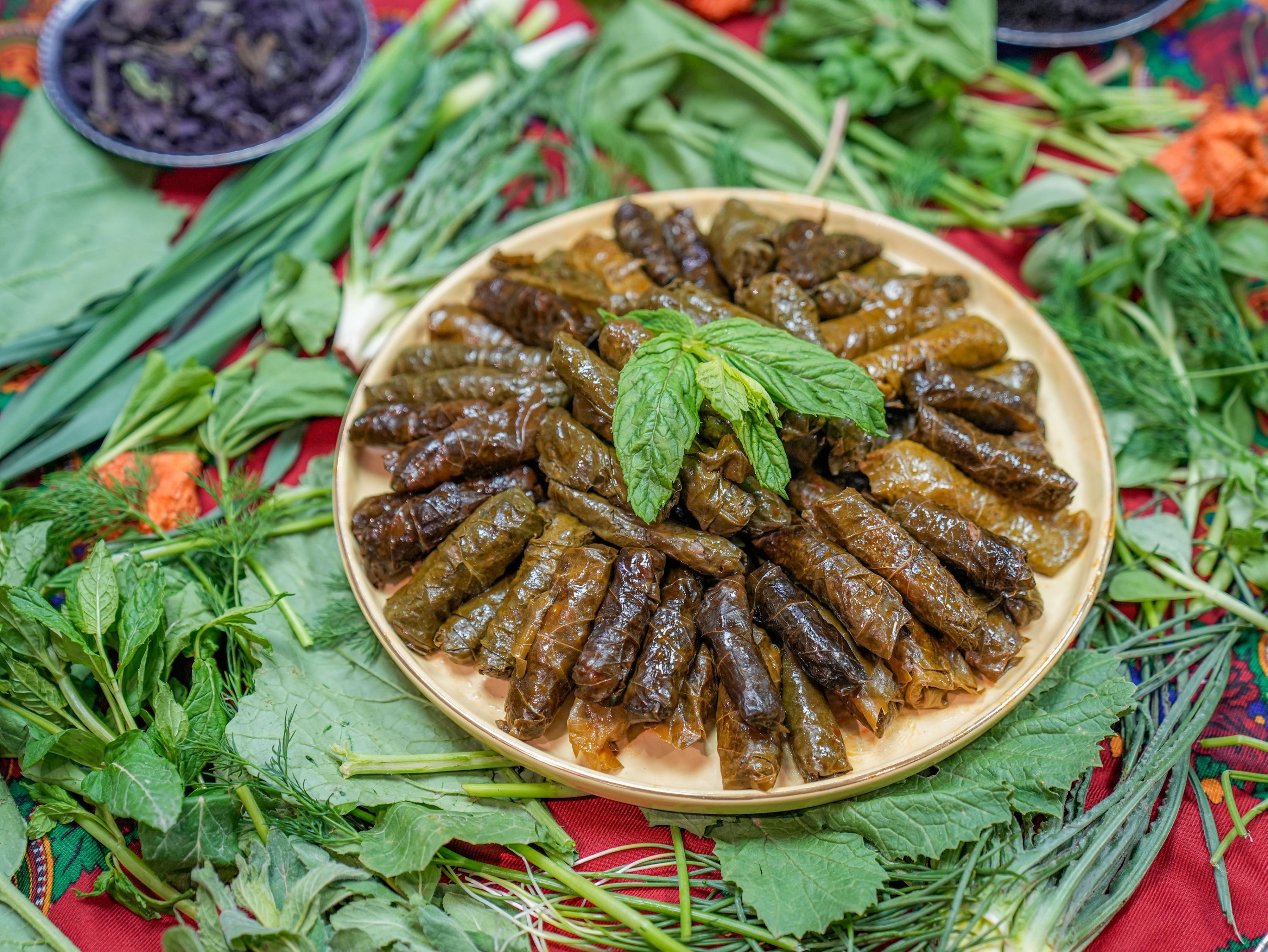Nestled along the banks of the Tigris River and recognized as a UNESCO World Cultural Heritage Site, Diyarbakır’s Hevsel Gardens have been a cradle of continuous agriculture for over 8,000 years. These fertile lands, often referred to as the city’s “oxygen reservoir,” are not only a hub of agricultural activity but also a natural source of wild herbs that enrich the local cuisine with unique flavors. In addition to cultivated crops, springtime in Hevsel brings forth a variety of wild herbs, such as heliz, wild garlic, sirim, gulik, tort, mallow, mustard greens, sorrel, nettle, yarpuz (a type of wild mint), kenger (gundelia) and ciris (asphodel).
Naturally growing in the gardens, these herbs have long been integral to Diyarbakır’s traditional dishes. To preserve and pass on this rich culinary heritage, instructors and students from the Food and Beverage Services Department at the Yenisehir Public Education Center regularly visit the gardens to forage these herbs. Once gathered, the herbs are used to prepare traditional dishes such as mastava – a yogurt-based dish made with rice, bulgur, eggs, wheat flour and grape molasses – as well as whole wheat bread with nettle, borani (a yogurt and spinach-based dish), stuffed grape leaves, zucchini fritters and gırık, a hearty meal made with bone-in meat or chicken simmered with onions and herbs.

Derya Akdağ Aykaç, a culinary instructor at the center, described the herbs from Hevsel as natural sources of healing, saying they are proud to incorporate these ingredients into their recipes. However, she also emphasized the importance of correctly identifying the plants, noting that some herbs, though seemingly harmless, can be toxic if improperly harvested or prepared. “For example,” she said, “yılan otu (snake herb) must be soaked in ayran (a yogurt-based drink) before it can be safely consumed.
Every plant has its own specific method of collection and preparation, which must be followed carefully.” Aykaç highlighted the frequent use of herbs like sirim and mallow, explaining that these are often blended with other ingredients and prepared using various cooking techniques to create flavorful dishes. “Hevsel Gardens are a true celebration of flavor for us,” she added.
Spending time in nature, gathering these healing herbs, and bringing the colors of spring to our tables is incredibly rewarding. Each of these endemic plants has its own unique aroma and they truly enrich our meals. We are especially committed to promoting healthy eating among younger generations.
With the arrival of spring, our tables become a vibrant palette of colors.” Aykaç also noted the nutritional benefits of the plants: “Yarpuz is rich in vitamin C, and kenger is beneficial for dental and digestive health. Every part of the plant, from root to seed, provides unique health benefits.
” Through these efforts, many nearly forgotten traditional recipes are being revived. Aykaç explained that approximately 25 different dishes can be prepared using just 10 types of wild herbs. These herbs are often combined with eggs, bulgur and flour to create a wide variety of nutritious meals, each with its own distinct taste and presentation.
Course participant Dilan Özgan shared her experiences using the herbs both at home and in the training center. “Bulgur pilaf made with the herb gulik is delicious,” she said. “We also make an egg-fried dish with mallow and use purslane in appetizers and sour soups.
With Kenger, we prepare both fried dishes and meftune, a regional stew. These are traditional flavors that are fading, and we’re working to revive them. She emphasized the importance of distinguishing between edible and poisonous plants: “Some wild herbs are toxic.
We carefully sort them out and discard any that are not suitable for consumption. We only use the freshest and most vibrant ones in our cooking.” Another course participant, Songül Çolak, spoke about the deep roots of Diyarbakır’s culinary culture: “Our dishes made with spring herbs from the Hevsel Gardens are absolutely delicious.
We learned these recipes from our elders. The gardens are now protected, offering countless blessings in the form of produce and agricultural products. These herb-based dishes are often served at weddings or when we host special guests.
” “Diyarbakır is mostly known for its grilled liver,” she added, “but our cuisine offers so much more. As local women, we want to promote these dishes and prevent this beautiful culinary culture from disappearing.”.
Food

Discovering rich culinary heritage of Hevsel Gardens in Türkiye

Nestled along the banks of the Tigris River and recognized as a UNESCO World Cultural Heritage Site, Diyarbakır’s Hevsel Gardens have been a cradle of continuous agriculture for ov...














